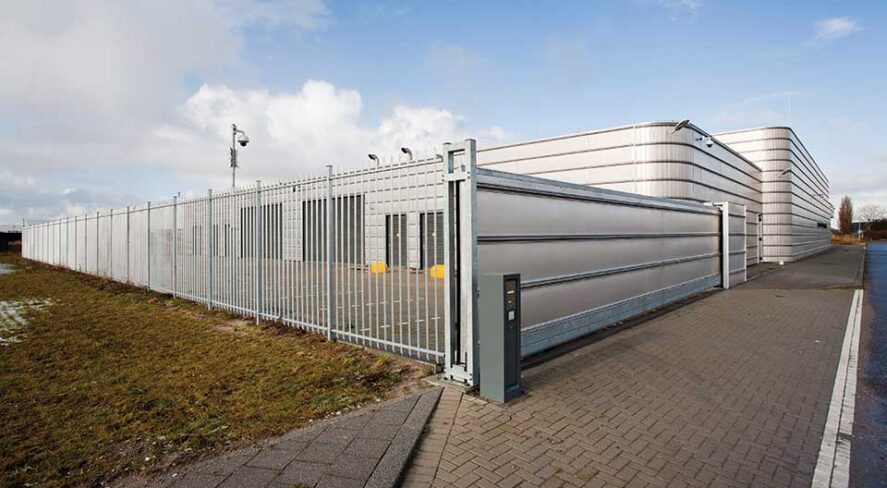Tightening the Perimeter With Technology

Artificial intelligence and other solutions can turn security from reactive to proactive

In recent months, there has been a noticeable evolution within the security sector, a transition from traditional physical defenses to technological solutions. This significant shift has greatly enhanced the scope and effectiveness of perimeter defense strategies, propelling solutions beyond the conventional reliance on physical barriers and personnel toward a future of increased efficiency, precision and adaptability.
The infusion of cutting-edge technology into perimeter defense mechanisms represents a pivotal advance toward more sophisticated, effective and reliable security monitoring systems. It marks the dawn of an era where the advantages of modern solutions far exceed those of conventional security measures.
The heightened interest in a more technological approach is driven by several factors, including the need for instantaneous monitoring and analysis, minimization of false alerts and improvement in the promptness and efficacy of responses to security threats. Surveillance systems equipped with the latest technological advancements are at the forefront of addressing these needs. As these technologies continue to mature, they hold the promise of revolutionizing security protocols, contributing to the creation of safer and more secure environments.
Revisiting Traditional Security Approaches
Historically, the foundation of perimeter defense has been physical barriers and the presence of security personnel tasked with preventing unauthorized entry and responding to incidents. These traditional methods, though, come with their own set of challenges, including ongoing maintenance expenses, the potential for human error or oversight, and the difficulty of surveilling expansive areas.
New technologies offer a novel solution to these challenges, leveraging the ability to process and analyze extensive data sets for informed decision-making. These advanced systems are capable of real-time video monitoring, anomaly detection, and threat prediction with a level of accuracy and speed unattainable by human operators alone.
One of the standout benefits of incorporating the latest technological innovations into perimeter security is the superior ability to detect objects. While the role of security personnel in risk identification is indispensable, the integration of modern technology can significantly amplify their efficiency by automating routine tasks and spotlighting potential threats. The continuous analysis of video and security data helps differentiate between normal occurrences and genuine security incidents, thereby reducing unnecessary alerts.
Data from recent market research indicates a market valuation for advanced video analytics of $5.6 billion in 2023, with projections suggesting a climb to $16.3 billion by 2028.
Looking Ahead With Proactive Insights
The adoption of state-of-the-art technologies within this market segment moves security from a reactive response to incidents as they unfold to a strategy that preemptively identifies potential threats. This is powered by the detailed analysis of behavior patterns and the spotting of incidents that stray from expected norms. Using the capabilities of data analytics and artificial intelligence, these advanced systems are designed to forecast possible security breaches, allowing for early intervention to minimize damage and loss. Transitioning to this anticipatory model of security is a notable progression in asset protection and safety enhancement, steering clear of the confines of reactive methods.
These innovations significantly bolster security architectures, enhancing rather than replacing the essential components of conventional frameworks. For instance, sophisticated monitoring technologies can seamlessly integrate with existing physical deterrents like gates and barriers, introducing intelligent access control methods that adaptively react to threats flagged through ongoing analysis. Such integration may result in the automated securing of vulnerable areas upon threat detection or the adjustment of access rights reflective of the risk level determined by the system. Security teams stand to gain immensely from these technologies, as they deliver essential, actionable intelligence that aids in strategic decision-making and streamlines response protocols. This melding of human insight with technological advancements elevates the overall efficiency of security measures, forging a more fortified and resilient environment.
Dispelling prevalent assumptions, the transition to these sophisticated technologies is not synonymous with exorbitant expenses. Rather, they emerge as a cost-efficient and scalable alternative to traditional security measures. The upfront investment in such technology can yield substantial long-term cost benefits by diminishing the dependence on elaborate physical structures and labor-intensive surveillance, which are typically resource-intensive to maintain. The scalable nature of these solutions also ensures that they can be tailored and extended to accommodate evolving security demands without requiring a comprehensive revamp of the existing setup. This adaptability guarantees that security protocols can advance in step with new threats and technology developments, maintaining robust protection measures without leading to spiraling costs.
The leveraging of advanced technology within perimeter security opens the gateway to a new chapter of proactive and intelligent safeguarding. The continuous evolution of these technologies will lead to even more refined solutions that are predictive, autonomous and capable of directly addressing threats, setting a new benchmark for the security industry. The security landscape is moving toward a future focused on prevention and foresight, powered by the latest technological advances, signaling the arrival of a transformative era in perimeter defense.
